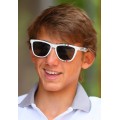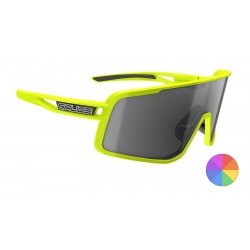Napszemüveg

Hogyan válasszunk napszemüveget? Milyen szempontoknak kell megfelelnie egy jó napszemüvegnek?
Az erős UV sugárzás veszélyeztetheti a szemet is, ezért fontos, hogy a napszemüveg kiválasztásakor ne csak esztétikai szempontokat vegyünk figyelembe. A jó napszemüvegnek védelmet kell biztosítania a napsugárzás káros hatásai ellen. Az UV sugarak nemcsak a bőrre nézve ártalmasak, hanem számos szembetegséget is okozhatnak. Az ózonréteg elvékonyodása következtében pedig a rövidhullámú UV sugarak szinte akadálytalanul juthatnak szemünkbe. A káros sugarak egy része felhősödés mellett is lejut a földfelszínig, ezért ilyenkor is viseljünk napszemüveget. A kontaktlencsét viselőknek is ajánlott napszemüveget hordani, hiszen még ha a lencse UV-védelemmel el is van látva, a szemnek csak egy kis részét fedi le. Az, akinek látásproblémája miatt szemüveget kell viselnie, hordjon dioptriás (vagy dioptriás betéttel ellátott) napszemüveget!
Milyen szempontokat vegyél figyelembe és miért válaszd a SALICE napszemüvegeit?
- A SALICE napszemüvegek garantáltan megfelelnek az európai irányelvek által meghatározott biztonsági követelményeknek.
- - Filter kategória (0-4-ig):
- 0-s kategória: tiszta vagy enyhén színezett lencse
- 1-es kategória: enyhén színezett lencse, viselése részben felhős időben ajánlott
- 2-es kategória: közepesen színezett lencse, viselése átlagos napsütésben ajánlott
- 3-as kategória: sötét lencse, viselése erős napfénynél ajánlott
- 4-es kategória: nagyon sötét lencse, viselése kivételesen erős napfénynél ajánlott. Nem felel meg országúti vezetéshez! Azokat a napszemüvegeket, amelyek láthatófény-áteresztése 8% alatt van, 4-es kategóriába kell sorolni és nem szabad vezetéshez használni, mert balesetveszélyes lehet. Ezt kötelezően fel kell tüntetni ezeken a szemüvegeken, ahogyan minden 4-es kategóriájú, illetve minden olyan napszemüveg esetében is, amelyek valamilyen okból nem felelnek meg országúti vezetéshez.
- A különböző fejlett felületkezeléseknek köszönhetően a lencsék ellenálnak a külső behatásoknak (karcolódás, izzadtság vagy vegyi anyagok okozta káros hatások, stb).
- Maximális kényelem! A nagy keret- és modellválasztéknak köszönhetően biztos megtalálod a neked legkényelmesebb szemüveget.
- A napszemüveg mérete: Mivel a napsugarak oldalról is bejuthatnak a szembe, a kicsi, kerek lencséjű napszemüvegek nem nyújtanak kellő védelmet. Válasszunk inkább a hajlított ívű sportszemüvegek vagy a nagy lencséjű modellek közül!
- Olyan napszemüveget válasszunk, amely a lehető legkisebb mértékben korlátozza a látóteret és a látást.
- Napszemüvegek sportoláshoz:
- Hegymászóknak vagy a hegyekben kirándulóknak különösen fontos, hogy oldalról is védje a szemet a napszemüveg.
- Kocogáshoz vagy nagyobb sétákhoz, futáshoz, kerékpározáshoz ajánlott olyan szemüveget választani, amiben az arc jól tud szellőzni.
- A sportszemüvegekkel szemben elvárás, hogy könnyű anyagból készüljenek, legyenek törésállók, kényelmesek és illeszkedjenek jól az arcunkhoz, fülünkhöz, orrnyergünkhöz.
- Készüljenek bőrbarát anyagból, és ne korrodálódjanak.
- A sportszemüvegek lencséje ideális esetben nem törő műanyag, nagyon könnyűek, és nehezen koszolódnak. Mivel nehezen törnek, a szem sérüléseinek kockázata is kisebb.
- Az íves napszemüvegek nemcsak az UV fénytől védik a szem oldalsó részét is, hanem a portól, a felcsapódó víztől és a felverődő apróbb kavicsoktól is.
- Szemüvegrögzítő pánttal még biztonságosabbá tehető a sportszemüveg viselése.
A SALICE professzionális napszemüvegeiben alkalmazott technológiák



A polarizált - vagy helyesen "polár szűrős" lencse előnyei
A napfény hullámokban terjed, melyek a háromdimenziós tér minden irányába rezegnek. A polarizált fény szintén terjed, de többnyire két irányban: horizontálisan és vertikálisan. A vertikális fény hasznos információt közvetít az emberi szemnek, lehetővé téve, hogy színeket és kontrasztokat lássunk. Ezzel szemben a horizontális fény ún. “optikai zavart” okoz és vakít, ugyanakkor a látott kép szempontjából felesleges.Az emberi szem nem képes szétválasztani a fényt alkotó vízszintes és függőleges sugarakat.
A „polarizált” lencsék egy speciális „polárszűrőt” kapnak, ami elnyeli a fény vízszintes irányú sugarait - amik a vakításért és a látott kép torzítását okozhatják – a vertikális sugarakat viszont szabadon áteresztik. A polarizált lencsék jobb látást biztosítanak, pontos színekkel és kontraszt érzékeléssel és egyben komfortosabb érzést adnak mivel megakadályozzák a csillogó felületek által okozott vakítást.
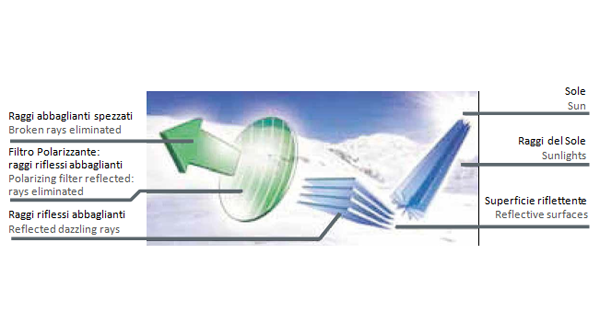
 • nincs többé vakító fény, • javul a fénylátás, és élesebbé válnak a kontrasztok, • a színek kiválóan élvezhetők, élettel telibbek lesznek. |

Fotokromatikus, azaz fényre sötétedő lencsék (CRX Photochromic)
 Napjaink talán legnépszerűbb, legkeresettebb lencséi. Nem véletlenül!
Napjaink talán legnépszerűbb, legkeresettebb lencséi. Nem véletlenül! Ezek a lencsék olyan fényre érzékeny anyagokból készülnek amik képesek módosítani kémiai szerkezetüket az őket érő fény hatására, így reagálnak a fényviszonyokra. Az alap esetben teljesen áttetsző lencsék a beérkező fény hatására besötétednek majd ismét kivilágosodnak amint újra sötétebb lesz a környezet!
Képzeljük csak el, hogy nem kell többet le- föl venni a szemüveget miközben az erdőben bringázunk vagy futunk!
Természetesen ezek a lencsék is – követve az EU szabályok által előírt követelményeket – szűrik a káros UV sugárzásokat illetve el vannak látva a megfelelő bevonatokkal a jobb karcállóság és tisztíthatóság érdekében. A CRX lencsék túlnyomó része a legnépszerűbb füst szürke („smoke”) színben készül, de egyes modellekhez elérhető narancs vagy barna változat is.
Ezek a lencsék szűrőkategória szerint 1-3 közt változtatják áteresztési értéküket.
 |

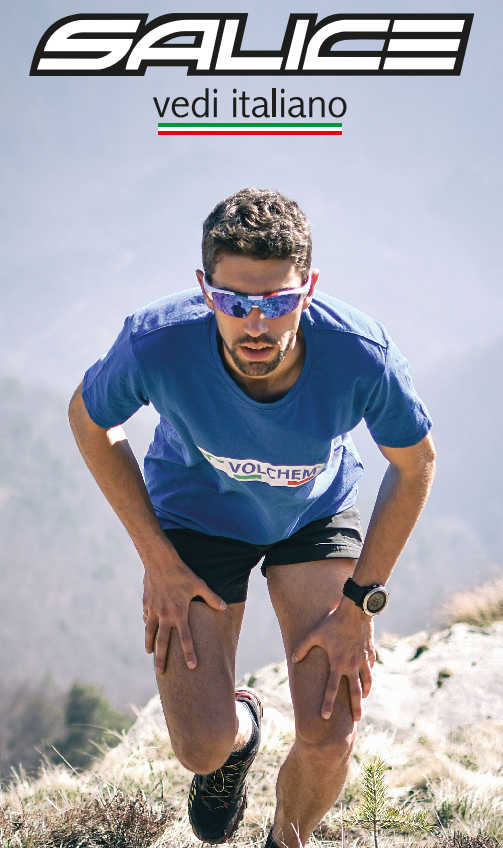
TECNA lencsék
A TECNA egy új generációs lencse ami speciálisan a hegyi sportokhoz lett kifejlesztve. Alap színe a sárga és a barna keveréke ami élesíti a látott kép kontrasztját és nagyobb mélység, térérzékelést biztosít. Védi a szemet a direkt napsugárzástól valamint a sima felületekről, hóról vagy jégről visszaverődő erősen vakító hatású sugárzástól. A belső oldali tükröződést kiküszöbölő felületkezelésnek köszönhetően a hátulról érkező fénysugarak sem verődnek vissza a lencséről, így nem kerülnek a szembe. Könyebb látást biztosít, kíméli a szemet a szélsőséges körülmények közt is, éles képet ad viselőjének. Elengedhetetlen a magas hegyi sportok során!
Szűrési kategória: 4.

QUATTRO lencsék
Szintén a hegyi sportokhoz kifejlesztett lencsék. Ha nem éred be kevesebbel mint a csúcstámadás és az igazán extrém körülmények közt fontos szemed védelme, akkor egy QUATTRO szemüveg a Te választásod! Ezek is maximális szűrést biztosítanak (4-es szűrési kategória), továbbá a speciális füst szürke árnyalatú lencsék kímélő hatással vannak az emberi szemre az erős visszaverődő (hó vagy jeges felületekről) sugárzással szemben. A külső tükrös foncsoros bevonat is tovább csökkenti ezek vakító hatását.
Szűrési kategória: 4.

HC High Contrast - kontraszt növelő technológiát használó lencsék
Minden fajta sport tevékenység során kiemelkedő teljesítményt nyújtanak az új kontrasztosabb képet biztosító HC technológiát alkalmazó lencsék! Élesebb kép, tökéletes színek - természetesen torzítás nélkül!
|
Az alábbi táblázat mutatja a lencsék szűrőkategóriába sorolását
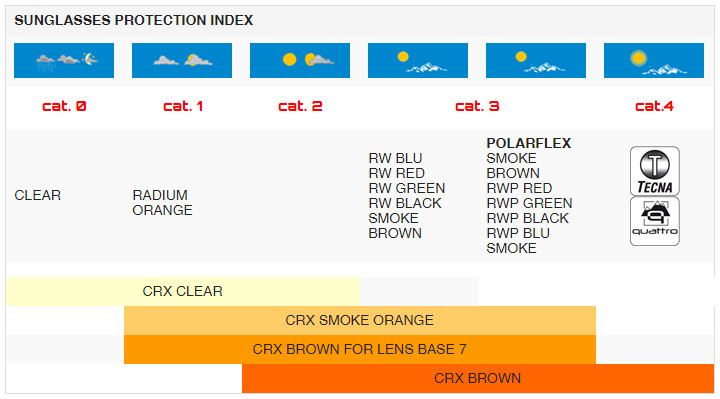 |






 A SALICE az optikai sugárzásokkal szembeni legjobb védelmet biztosító lencséi: az új IR technikai lencsék!
A SALICE az optikai sugárzásokkal szembeni legjobb védelmet biztosító lencséi: az új IR technikai lencsék!





